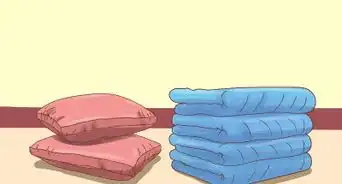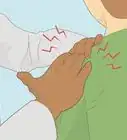This article was medically reviewed by Sarah Gehrke, RN, MS and by wikiHow staff writer, Christopher M. Osborne, PhD. Sarah Gehrke is a Registered Nurse and Licensed Massage Therapist in Texas. Sarah has over 10 years of experience teaching and practicing phlebotomy and intravenous (IV) therapy using physical, psychological, and emotional support. She received her Massage Therapist License from the Amarillo Massage Therapy Institute in 2008 and a M.S. in Nursing from the University of Phoenix in 2013.
There are 13 references cited in this article, which can be found at the bottom of the page.
This article has been viewed 20,440 times.
When you have a knot in your shoulder, you might blame it on spending the day hunched over your office computer. But the stress of finishing all your invoices by the deadline may be as much to blame as your sitting posture. Shoulder tension often has both physical and emotional causes, and therefore requires both physical and emotional treatments. Combining massage, stretching exercises, and stress management techniques offers your best bet for soothing your shoulder tension.
Steps
Using Self-Massage or Professional Treatments
-
1Squeeze and slide your hands up your shoulder muscles. While seated, cup your left hand over your left shoulder and your right over your right, just below the base of your neck. Exhale and allow your head to drop back. Gently squeeze your palms towards your fingers, and you’ll feel your shoulder muscles gripped in between. Maintain this gentle grip on each muscle as you slide your hands up your neck on either side of your spine.
- This is a great massage to do while sitting at your desk. Repeat it as often as you like.
- A partner can also stand behind you and perform this quick massage.
- You can also massage one shoulder at a time using your hand on the opposite side of your body.
-
2Massage your shoulders and neck with your fingertips. Start by closing your eyes and breathing deeply and slowly. Then, use your fingertips to massage in small circles, starting above your shoulder blades and working up both sides to the top of your neck. Press firmly, but don’t cause yourself substantial pain.
- Take a quick break from your computer screen to do this self-massage every hour or so — or whenever you need it! You can do this massage as often as you like, for as long as you like.
Advertisement -
3Do a quick shoulder and neck stretch while you’re working. Back away from your desk or stand up. Interlace your fingers against the back of your head. Droop your head forward and let the weight of your dangling arms pull downward gently on your head and neck. You’ll feel the muscles in your shoulders, upper back, and neck stretch slightly.[1]
- Don't force your arms down — let gravity do most of the work.
- Hold the stretch for 10-15 seconds, repeat it 3-5 times per session, and do as many sessions as you need to during the day.
-
4Massage a shoulder knot with a tennis ball. Stand with your back against a wall or lay down on the floor. Then, pin a tennis ball or racquetball between the wall or floor and your shoulder, just to the side of your spine. Very slowly roll the ball with your back until it hits the tight spot.[2]
- Hold that position for a few seconds, and perhaps shimmy up and down and side to side a little to work the ball into your shoulder knot. When you feel some relief, switch the ball to the other side of your spine as needed.
- Don't roll the ball directly over your spine.[3]
- You can repeat this maneuver anytime the knot becomes bothersome.
-
5Let a friend or partner work the upper, inner corner of your shoulder blade. Lie flat on your stomach, with your arms relaxed at your sides. Ask the other person to follow your triangular shoulder blade’s top ridge from your shoulder to where it meets your spine. Just below this ridge, and beside your spine, they should be able to find a “sweet spot” that tends to hold a lot of tension — and provide a lot of relief when massaged.[4]
- When they find the spot, ask them to rub it firmly in a circular motion.
- Fibers from the infraspinatus muscle that sits under the shoulder blade connect at this spot, meaning you may feel relief throughout your entire shoulder area.
- You can request a repeat of this massage as often as you need it — but be ready to return the favor!
-
6Visit a professional massage therapist to get more substantial relief. It’s tough to massage your own shoulders thoroughly, and even an eager partner probably won’t have the skills to provide a great shoulder massage. A trained and experienced massage therapist can work the muscles from your neck to your back and melt away the tension in your shoulders.[5]
-
7Work with your doctor or chiropractor for more serious shoulder trouble. If your shoulder tension won’t go away, causes substantial pain, or restricts your head, neck, or shoulder movement, seek out qualified medical help. Your doctor may recommend physical therapy, chiropractic care, and/or a pain management regimen that includes NSAIDs, analgesics, or corticosteroids.[8]
- Chiropractic care techniques (and costs) can vary widely, so look for solid referrals and ask about a chiropractor’s experience, treatment methods, and billing procedures before choosing one.[9]
Managing the Stress that Migrates to Your Shoulders
-
1Meditate to reduce stress and anxiety. Meditation can take many forms — deep breathing exercises, mindfulness exercises, visualization techniques, guided meditation, and so forth. Search wikiHow for some great meditation articles, check out instructional videos online, or join a class to get direct instruction from an expert.[10]
- When stress hits you hard and your shoulders tense up, sometimes a simple breathing exercise can make a big difference. Close your eyes, and breathe in slowly through your nose for a count of 5. Hold the breath for a count of 1 or 2, then breathe out through your mouth for a count of 5.
-
2Work out your stress with aerobic exercise. Taking a brisk walk or going for a bike ride (outdoors or stationary) provides a host of health benefits, including releasing endorphins that combat stress. For general health benefits, it’s advised that you do moderate aerobic exercise — during which you breathe and sweat more but can carry on a conversation — 30 minutes per day, 5 days a week. But a quick walk is a great idea anytime you feel stress and the resulting shoulder tension.[11]
- If your shoulders are tight, make sure to do some stretches beforehand, as described in the relevant section of this article. This is especially important if you’ll be using your arms for swimming, using an elliptical machine, etc.
- Talk to your doctor before beginning a new exercise regimen, especially if you have shoulder or neck pain along with tension.
-
3Prioritize, say “no,” and let go when your plate is too full. “Workaholics” and “super-moms” (or “super-dads”) often fall victim to excessive stress and tense shoulders because they try to do too much. Learn to prioritize your tasks by listing and ranking them, say “no” when you just can’t take something on, and let go of your unrealistic self-expectations.[12]
-
4Ask for help from friends and loved ones. The people who care about you want to help you out, so don’t be too proud to ask for a hand when you need it. You’ve helped others when they’ve been overwhelmed and stressed out, and there’s nothing wrong with being on the receiving end when you’re in that same boat. Ask your sister to pick up the kids for you, pay your neighbor’s kid to take care of your lawn this summer, or see if a co-worker can give you a hand on that big report.[13]
-
5Explore therapy and support group options. Some stress can’t be meditated, exercised, or “no”-ed away. And there is absolutely nothing wrong with admitting you need more help — and getting it. Talk to your doctor about seeing a licensed therapist — cognitive behavioral therapy, for instance, can be an effective stress management technique. Or seek a referral for a stress management support group in your area, or online.[14]
- Talk to prospective therapists before choosing one. Ask about their views on the causes of shoulder tension, their experience in this area, and their treatment techniques.
-
6Combine stress management with stretches, exercises, and massage. The best way to get rid of shoulder tension is to attack it from all angles simultaneously. Combat the stress that’s contributing to the tension, while at the same time working to reduce the physical causes and symptoms of your shoulder tightness.[15]
Doing Stretching Exercises and Yoga
-
1Use a wall and a door frame to stretch your shoulders. Face a wall and extend your arms straight out so your palms are flat against it. Keep your hands against the wall while you back up a few steps, bending at the waist so that you’re looking at the floor. Keep your shoulders relaxed, and don’t push against the wall. Hold this stretch for 30 seconds.[16]
- Then, stand at a right angle to an open doorway, facing the door hinge with your side against the latch side of the frame. Reach across your body and through the open doorway to grab the door frame that faces the other room. Slide away from the door frame until you feel a gentle stretch in your shoulder and back. Hold for 30 seconds, then repeat with your other arm.
- Do these stretches 1-2 times per day, as often as every day.
-
2Do shoulder stretches with an elastic tension band. Hold the tension band behind your backside, with your arms straight and shoulder-width and your palms facing back. Droop your shoulders down and back, extend your arms back slightly, and pull on the tension band with both hands. Hold for 30 seconds.
- Then, hold the tension band over your head, with your arms straight up and shoulder-width. Pull the tension band to the right (bringing your left arm with it) while shifting your hips out to the left. Hold this stretch for 5-10 seconds, then pull the band to your left in the same manner.
- You can also use a fabric strap, sturdy rope, or rolled up towel instead of an elastic tension band.
- Again, you can do these stretches 1-2 times every day as needed.
-
3Start a shoulder-focused yoga session with shoulder and neck rolls. Stand or sit up straight. Roll your shoulders in one fluid motion, up, back, and down to the starting position. Do this 5 to 10 times, then roll up, forward, and down 5 - 10 times. Close your eyes and breathe slowly and purposefully.[17]
- Then, roll your shoulders back slightly while still sitting or standing straight. Tilt your head to the right and dip your chin down to your chest. Keep your chin to your chest as you rotate to the left, lift your head, and return to the neutral position. Do the same maneuver in the opposite direction (left to right), and repeat each neck roll 5 times.
- Try doing yoga sessions 3-4 times per week, if possible -- but even one session per week will help.
-
4Practice yoga maneuvers that release shoulder tension. Any yoga routine is likely to help your knotted shoulders, but certain poses can provide more specific benefits. Read up on the details of specific poses, watch instructional videos online, and — better yet — sign up for a yoga class with a qualified instructor. Try, for instance:
- Thread the Needle Pose
- Cat and Cow Pose
- Bridge Pose
- The Standing Forward Fold
- Extended Side Angle Pose[18]
References
- ↑ https://www.cbphysicaltherapy.com/part-1-6-ways-to-get-rid-of-your-tension-headache/
- ↑ https://www.painscience.com/articles/spot-14-infraspinatus.php
- ↑ http://www.laspine.com/back-massage-tennis-ball/
- ↑ https://www.painscience.com/articles/spot-14-infraspinatus.php
- ↑ https://www.youtube.com/watch?v=LbOryEOsqIQ
- ↑ https://www.amtamassage.org/findamassage/index.html?utm_source=%2ffindamassage%2ffind.html&utm_medium=web&utm_campaign=redirect
- ↑ https://www.takingcharge.csh.umn.edu/explore-healing-practices/massage-therapy/how-can-i-find-right-massage-therapist
- ↑ http://www.arthritis.org/about-arthritis/where-it-hurts/shoulder-pain/treatment/shoulder-arthritis-medication.php
- ↑ https://www.takingcharge.csh.umn.edu/explore-healing-practices/chiropractic/how-can-i-find-qualified-practitioner
- ↑ https://www.spine-health.com/blog/how-relieve-neck-pain-caused-stress
- ↑ https://www.spine-health.com/wellness/exercise/low-impact-aerobic-exercise
- ↑ https://www.spine-health.com/blog/how-relieve-neck-pain-caused-stress
- ↑ https://www.spine-health.com/blog/how-relieve-neck-pain-caused-stress
- ↑ https://www.spine-health.com/blog/how-relieve-neck-pain-caused-stress
- ↑ https://www.spine-health.com/blog/how-relieve-neck-pain-caused-stress
- ↑ https://www.uofmhealth.org/health-library/zm2380#zm2380-sec
- ↑ https://www.healthlinkbc.ca/health-topics/abn0720
- ↑ http://www.active.com/fitness/articles/4-yoga-poses-for-tight-shoulders

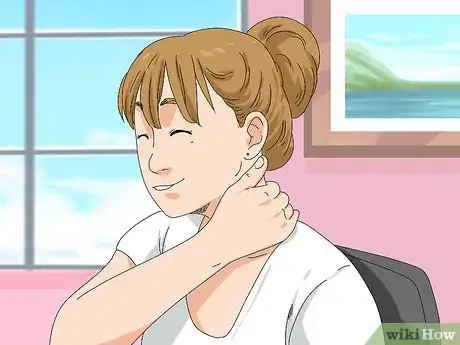
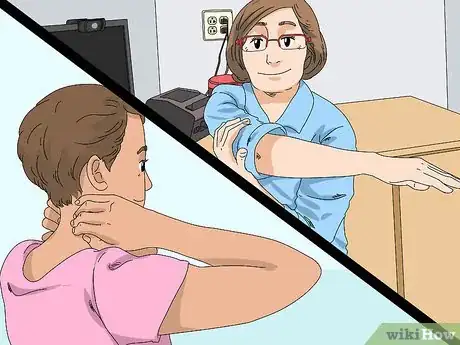






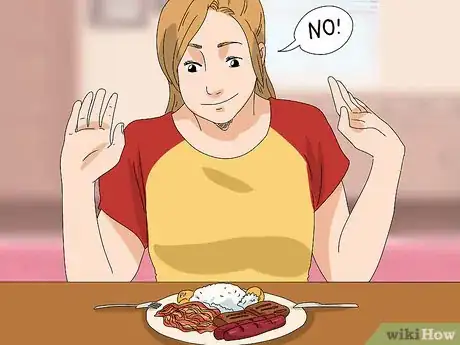

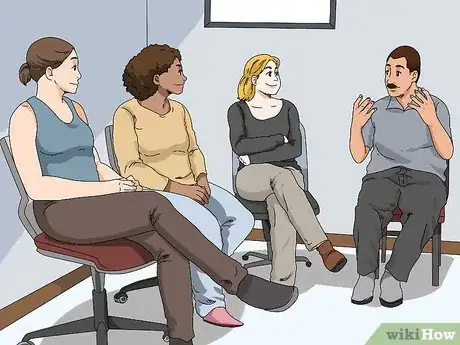
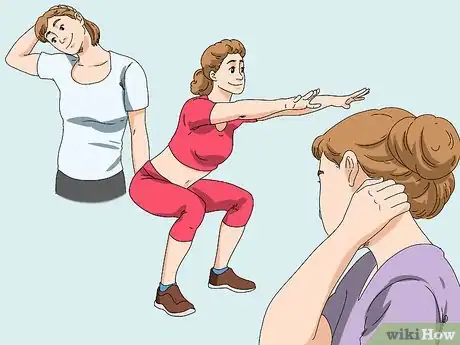
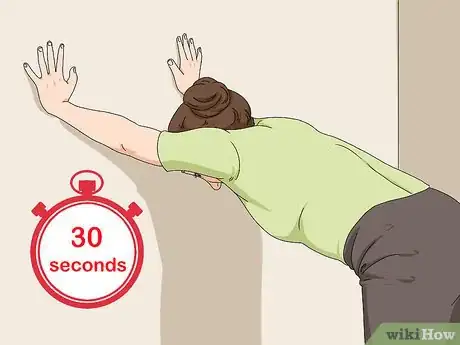

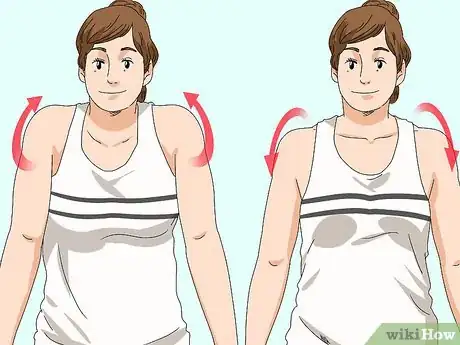
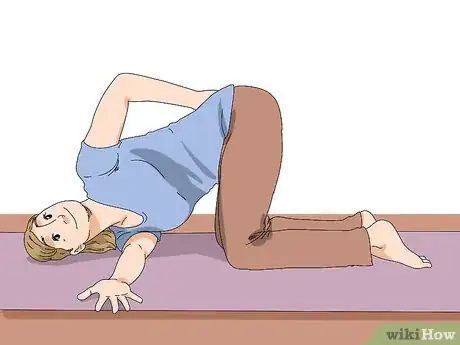


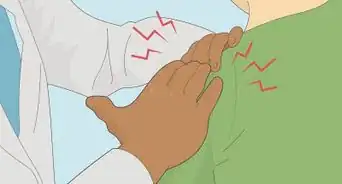

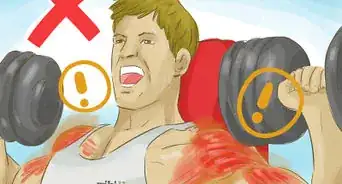

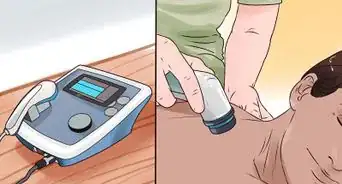
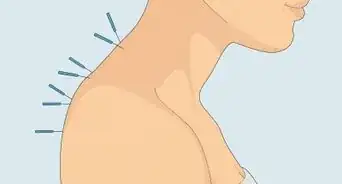
-Step-3-Version-3.webp)


